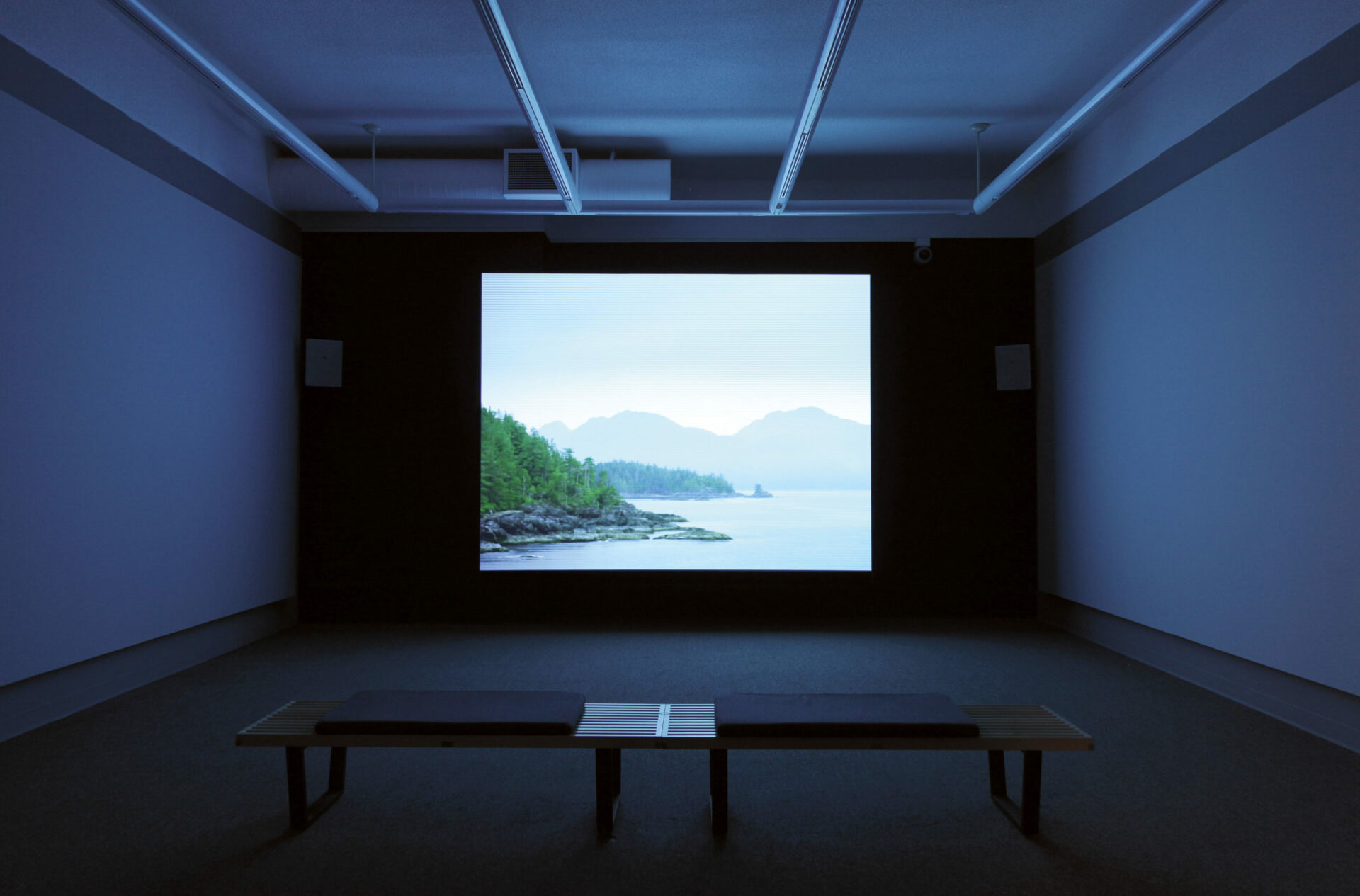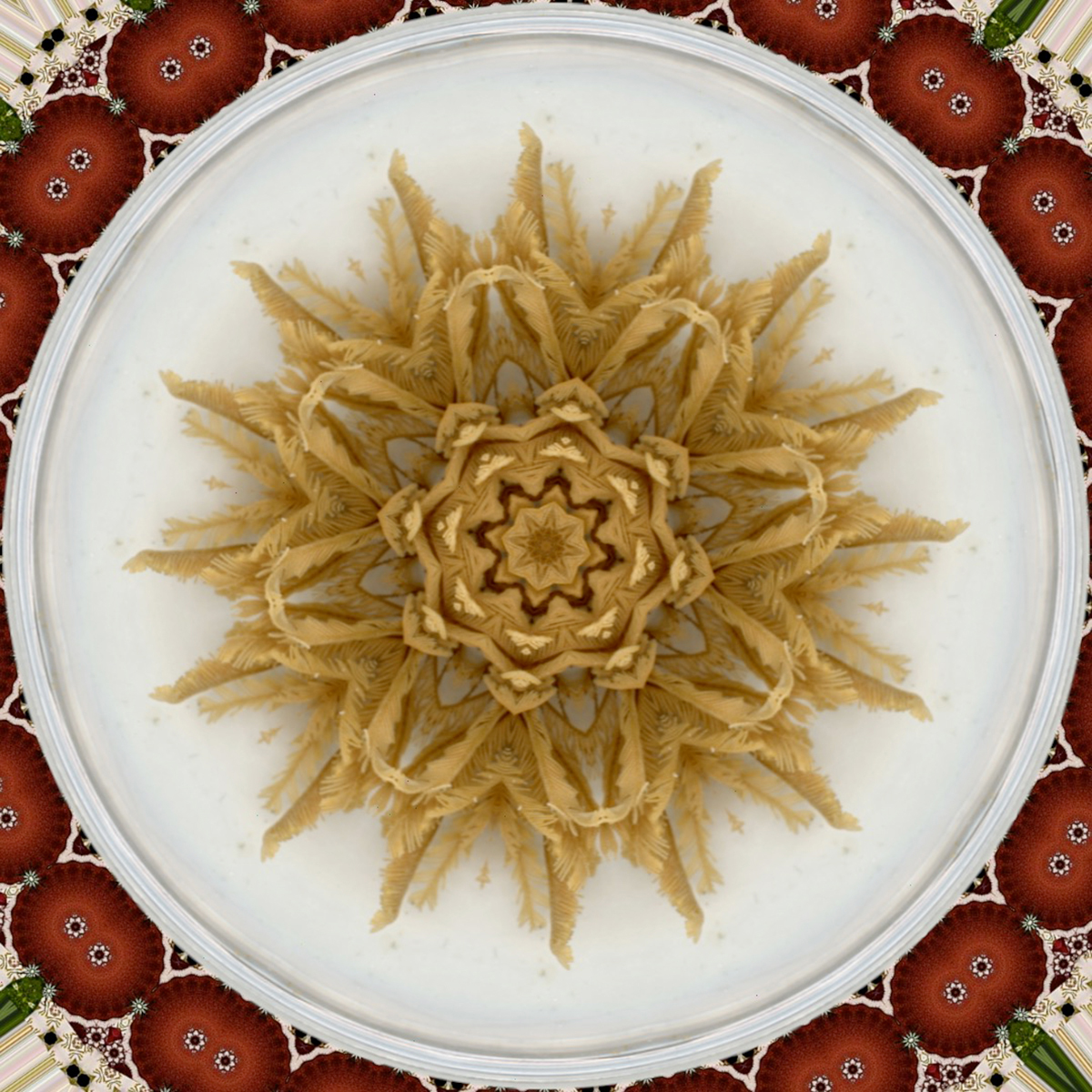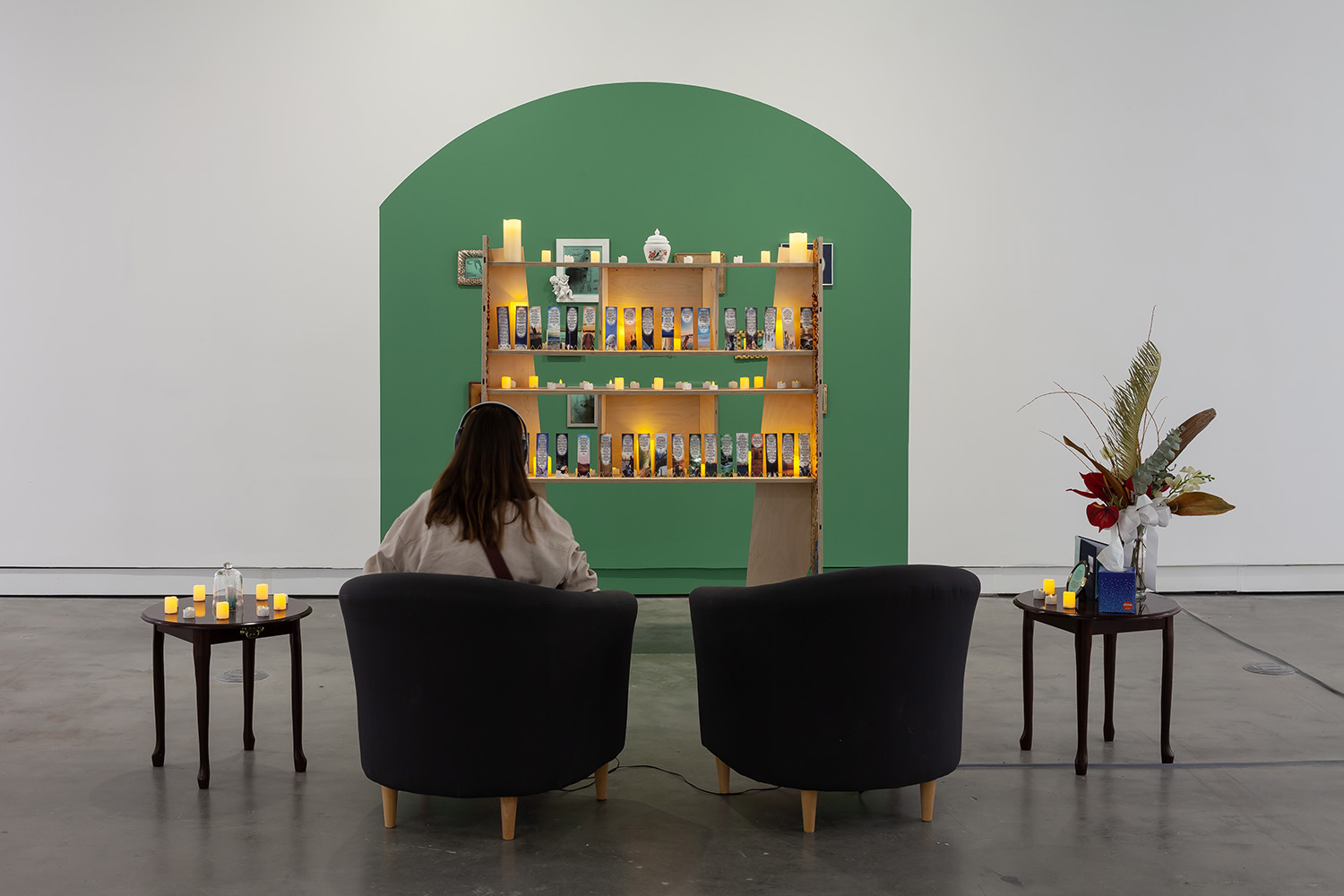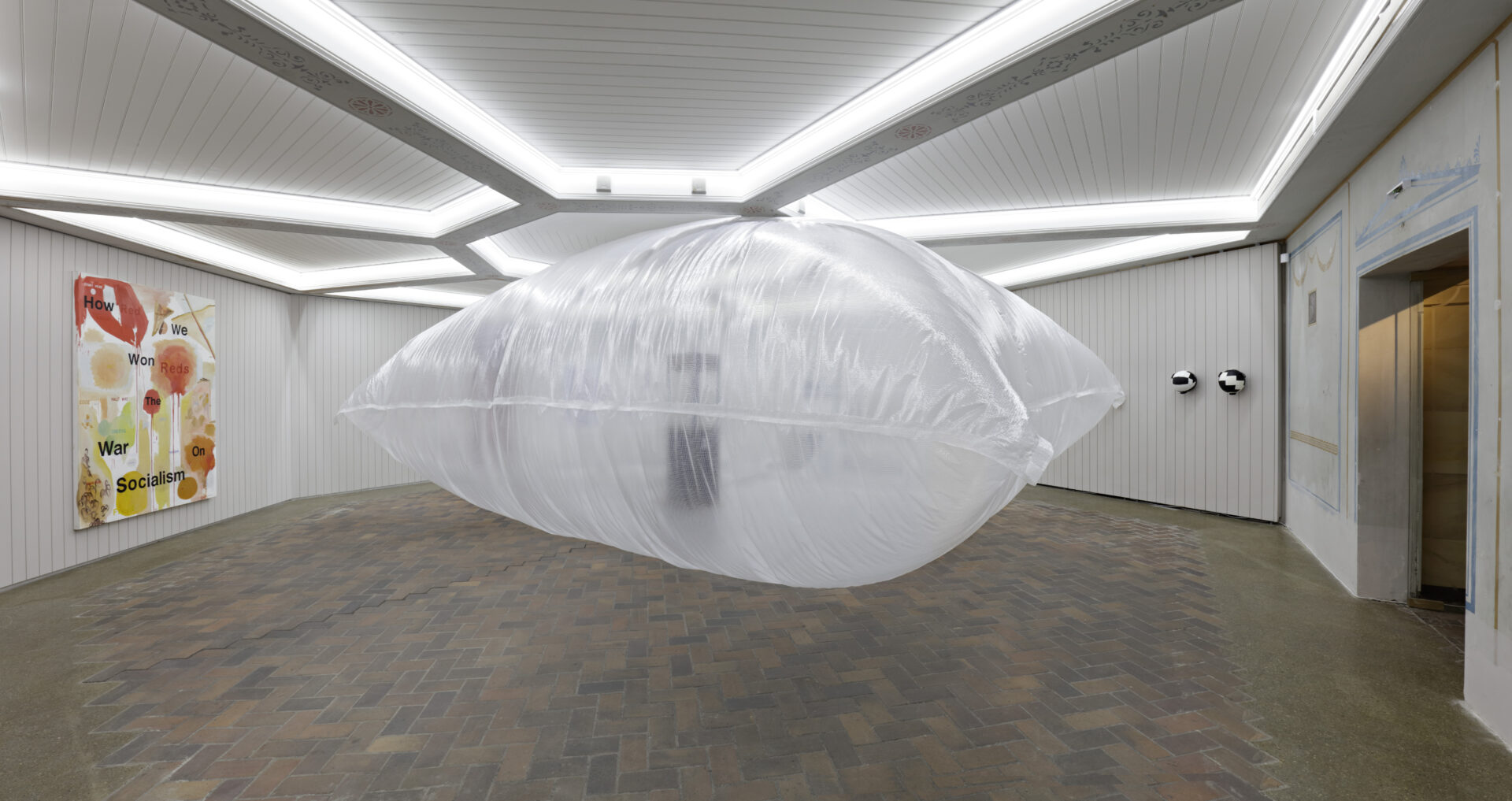
Photo : Toni Hafkenscheid
June 26–August 31, 2014
[En anglais] The scent hits first. Out in the hall, before even entering the Koffler Gallery, Penelope Stewart's Vanitas makes itself known with the sweet, honeyed aroma of beeswax. Once inside, this concentration makes sense: beeswax is virtually the only material within the show, though it takes many forms. Stewart creates a room within a room; a small, box-like structure in the middle of the gallery stands ensconced in ornately designed slabs of varying shades of beeswax. Entering this smaller room, visitors can venture through and view the rear half of the gallery, where the installation explodes. Out of the florally patterned tiles, beeswax casts of succulents and lotus pods bloom. In the rear of the gallery objects cast in beeswax are piled high and draped from the ceiling: stacks of plates, candlesticks, cups, keys, strings of eggs and leaves. The effect is something akin to wandering into an archeological site, but the beeswax alters the sensation. Stewart wields a Midas touch gone awry.
Vanitas looks for a lineage in the largely Flemish oil paintings that came to prevalence during the sixteenth and seventeenth centuries. These still lifes, stocked with skulls, slightly over-ripened fruit, small insects and recently extinguished flames, contained sneaking messages of imminent mortality. They warned against placing too much weight in the fleeting material world, while simultaneously offering something beautiful enough to satisfy the emergent merchant class’s taste. Stewart approximates the sheer excess of the Flemish still lifes, but doesn’t capture their dark, foreboding elements. And the two break off in another way: in vanitas paintings, the objects seem to hover on the edge of fully blown erasure, yet they are locked in, for hundreds of years, in oil paint and binders. Stewart’s installation functions in reverse. With a few exceptions, her objects don’t appear delicate, or near disintegration. The tiles and bee skeps seem so solid and firm that it’s difficult to resist reaching out and touching them, feeling their weight and solidity. But, despite this visual solidity, the work exists in a fragile, delicate state; slight fluctuations in temperature can cause sweating or even destruction.
Créez-vous un compte gratuit ou connectez-vous pour lire la rubrique complète !
Mon Compte


